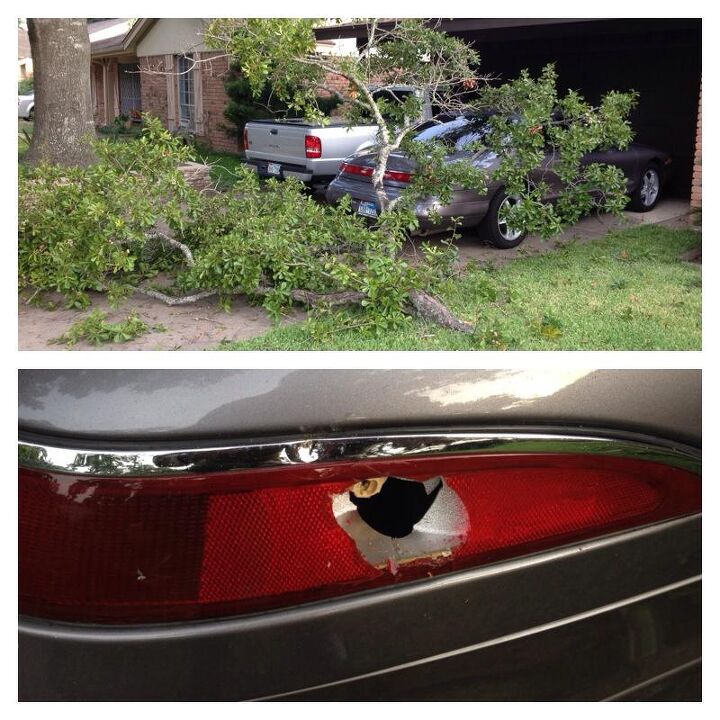Piston Slap: When to Drop Full Coverage Insurance?

N.C. writes:
Sajeev,
We have 5 cars and 4 drivers. My wife and I drive the three oldest vehicles: 2003 LS430, 2005 Z4, and 2000 Frontier. My question is regarding collision insurance on the Lexus and the BMW. I currently carry full coverage on both and am considering dropping collision coverage to save money.
KBB and Edmunds show a range of values for the Lexus of between $5800 to $6200, (trade-in value that is, which is what the insurance company would want to pay if a claim was made) and the BMW is between $8100 and $6600. Both vehicles are mechanically sound and used for daily drivers. My youngest child will be a freshman in college in the fall and I would like for both of these vehicles to last for 4 more years before we consider replacing them. When does it make financial sense to drop collision coverage?
Sajeev answers:
I hate these questions, they are in the eye of the beholder. Do you love these cars more than any replacement? Do you have big monthly expenses you have to worry about? Student loans, child support, tax spikes, etc?
If you don’t care for the cars, can afford to take a total loss from an uninsured motorist and value more cash in your wallet every month; by all means, switch to basic coverage.
I like full coverage. But you don’t have 15+ year-old cars with rare options (that matter to fanbois) expensive-ish modifications (headers, fancy torque converters, acres of dynamat) making them irreplaceable. You save a ton of money over basic coverage when something terrible happens (i.e. the claim’s payout) or by getting that terrible thing fixed (with or without a rebuilt title, depending on your state’s law).
Full coverage isn’t much more than basic to me, but you wanna know what really sold me?
One morning I walked out to this scene: reeeeeeeal lucky that branch only scratched my trunk and busted my tail light. The paint buffed okay, a decent used light was $35 shipped from eBay that same morning.
The money I saved this time ’round went to $45 of Harbor Freight’s finest cutting tools: the saw is actually great for limited-use suburbanites! No matter, they made short work of the branch and the affair was pretty damn fun, actually.
But I won’t tempt fate again. I know when to drop full coverage insurance, and I don’t anticipate that need. Heck, I might switch to stated value just because I am such a Lincoln-Mercury fanboi.
[Lead image: Shutterstock user Song_about_summer]
Send your queries to sajeev@thetruthaboutcars.com. Spare no details and ask for a speedy resolution if you’re in a hurry…but be realistic, and use your make/model specific forums instead of TTAC for more timely advice.

More by Sajeev Mehta
Latest Car Reviews
Read moreLatest Product Reviews
Read moreRecent Comments
- El scotto err not be an EV but to own an EV; too much training this week along the likes of what kind of tree would be if you were a tree? Sorry. Bring back the edit function.
- The Oracle Geesh, Stellantis can’t even perform the upkeep on that relic of a plant. Sad.
- The Oracle I see Tesla introducing disruptive charging technology within 3 years.
- The Oracle I can see into the future and I see fisticuffs and profanity-laced tirades coming to charging locations near ya’ll.
- El scotto Will ascots be discussed at the HOA meetings? Or Purdey shotguns?



































Comments
Join the conversation
I personally drop it as soon as possible. That money is better kept in the rainy day fund, as I am not one for blowing money. With a paid-off car, I'll easily take the risk of having to fork over bucks for major repair or total replacement over waiting for insurance to send some unspecified amount and raise the premiums to cover it. Assets beat perpetual paying. Assets build when you cut recurring expenses.
I worked for a big-name insurance company for 8 years on the phones. This is what I told my customers: The first thing to do is balance the "blue book" value of the car against what you're paying for coverage and what your deductible is. Example: Car is worth $3000. Deductible is $500. 6-mo premium for coverage is $250. $3000 - $500 = $2500 - what you'll get from the insurance. $2500 / (2 x $250) = 5 years. In essence, this means that you will pay the replacement cost of the vehicle in insurance premium is 5 years. This is where each person has to find their comfort level based on budget. At 5 years it probably still makes sense to keep the coverage. Once that number dips below 4 it's probably better to drop it and put that money in the bank as a down payment for a new car. As a sidecar, I tell people to consider whether they will actually use the coverage. If the vehicle is a beater pickup and you're going to live with dents and scratches, why pay for the coverage? Your individual driving history is a factor, too. Keep in mind that collision coverage is only for repairing your car when YOU are at-fault in a loss, if you're confident you're not going to cause an accident, you're less likely to need it. And keep in mind, in all states you can carry comprehensive and not collision, so you can still be covered for acts of nature. In fact, in many cases, the "right size" coverage is to drop the collision coverage and actually lower the comprehensive deductible. Many times you can go from $500 to $250 for as little as $10/year.